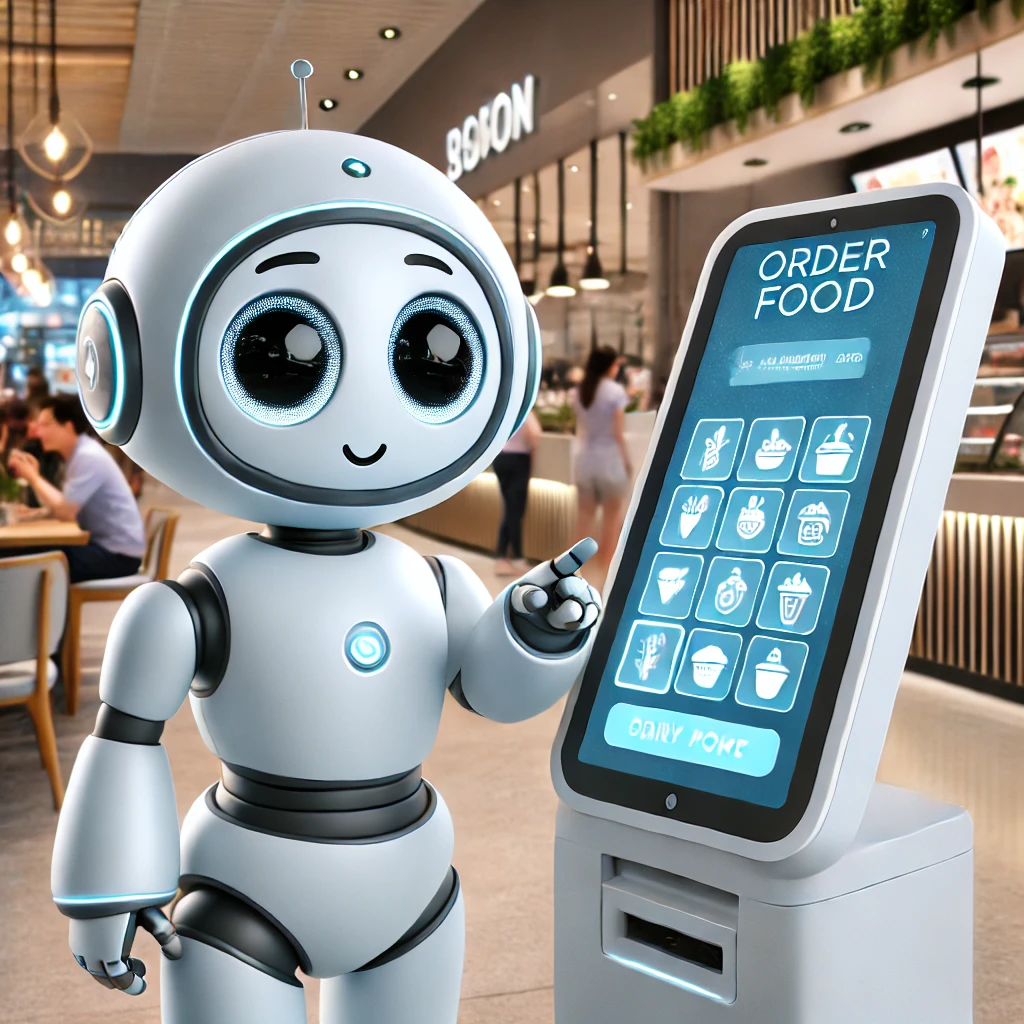Let's talk about a challenge many businesses are facing: rising labor costs, particularly with mandated minimum wage increases in many states. It's a reality that's impacting bottom lines, especially in industries like retail and food service. But there's a solution gaining traction that can help mitigate these costs while also improving efficiency and customer satisfaction: automation through self-service kiosks.
Here at REDYREF, we've been at the forefront of digital kiosk technology for years. We've seen firsthand how automation can transform businesses, and we're here to tell you that it's not some futuristic concept – it's happening now, and it's more accessible than you might think.

Why is Automation Suddenly a Hot Topic?
Several factors are converging to make automation, particularly self-service kiosks, a critical consideration for businesses:
- Minimum Wage Hikes: The push for a $15 minimum wage, particularly for fast-food workers in places like New York, is a major catalyst. Businesses are realizing they need to find ways to offset these increased labor costs to stay profitable.
- Successful Early Adopters: Major brands like Starbucks and Panera have successfully implemented customer-driven ordering processes, demonstrating the viability and consumer acceptance of self-service.
- Technological Advancements: Rapid progress in areas like self-driving cars is making the public more comfortable with the idea of automation in everyday life.
- The Need to Control Labor Costs: Beyond wages, businesses are looking to minimize expenses associated with benefits, absenteeism, human error, and health and safety issues.
Who's Using Self-Service Kiosks? (Hint: It's Not Just Big Corporations)
You might be surprised at the wide range of businesses embracing kiosk technology. From major airports and hotel chains to universities, retail giants, and even "mom and pop" shops, self-service kiosks are proving their value across diverse industries.
Here are some common examples:
- Airport, University, and Business Directories: Touchscreen kiosks that help people find their way.
- Ticket Vending: For public transportation, sporting events, and entertainment venues.
- Restaurant Ordering: Self-service kiosks in fast-food and fast-casual restaurants.
- Tabletop Tablets: For ordering and payment at full-service restaurants.
- Hotel Check-In: Streamlining the check-in/check-out process at hotels.
When Does Automation Make Sense?
It's not just about busy times. While kiosks can certainly handle peak customer flow, they can also be incredibly useful in situations where staffing a location with full-time employees isn't cost-effective. Think of a library branch with lower traffic or an information desk in a less frequented part of a building.

Why Are Businesses Turning to Kiosks? The Real Reasons
The primary driver is cost control, especially concerning labor. But beyond that, there are compelling reasons to consider automation:
- Increased Efficiency: Kiosks can process orders and transactions faster than humans, reducing wait times and improving customer flow.
- Improved Accuracy: Automated systems minimize human error, leading to fewer mistakes in orders and transactions.
- Upselling and Cross-Selling: Kiosks can be programmed to suggest relevant add-on items, increasing average transaction value.
- Valuable Data Collection: Kiosks can gather data on customer preferences, traffic patterns, and popular items, providing valuable insights for business decisions.
Self-Service Kiosks: Not Just for the Big Guys
While large corporations were early adopters, interactive kiosk technology has become more affordable and accessible, making it a viable option for smaller businesses as well. In fact, these are the businesses that can see some of the biggest benefits, as they are often the hardest hit by the rising minimum wage increases.
Real-World Example: How Kiosks Can Transform a Small Business
Consider a small, locally-owned diner. By implementing self-service ordering kiosks, they could:
- Reduce labor costs: Potentially needing only one front-of-house employee instead of two, especially during slower periods.
- Increase table turn: Faster ordering and payment mean tables open up more quickly.
- Boost revenue: Even a modest increase in table turns can significantly impact annual revenue.
- Improve order accuracy: Fewer errors lead to happier customers and less wasted food.
The Retail Revolution: How Kiosks Are Changing the Game
Retail is another sector ripe for kiosk disruption. Here's how they're making a difference:
- Empowering Customers: Interactive directories help shoppers find what they need quickly and independently.
- Streamlining Checkout: Self-checkout kiosks reduce wait times, especially during peak hours.
- Expanding Inventory: In-store kiosks allow customers to order items not available on the shelves, shipped directly to their homes.
- Boosting Sales: Kiosks never forget to upsell or cross-sell, increasing average transaction value.

Addressing the Downsides: Smart Planning is Key
Of course, no technology is without its potential drawbacks. Early kiosk deployments were sometimes plagued by high maintenance costs and technical glitches. However, advancements in software and remote management capabilities have largely addressed these issues.
The most common reason for kiosk program failure? Inadequate planning and a lack of clear goals.
Here's how to avoid common pitfalls:
- Choose the Right Software: This is crucial for reliability and ease of maintenance. Modern kiosk software is designed to be robust and remotely manageable.
- Set Clear Goals: Define what you want your kiosk program to achieve from the outset. This will guide your decisions throughout the process.
- Thorough Research: Understand your target audience, their needs, and their comfort level with technology.
- Invest in User-Friendly Design: Make sure the kiosk interface is intuitive and easy to navigate.
The Bottom Line: Automation is Here to Stay
The shift towards automation is not a fad; it's a fundamental change in how businesses operate. By embracing self-service kiosk technology, companies can adapt to the evolving economic landscape, improve efficiency, and enhance the customer experience.
REDYREF: Your Partner in Automation
At REDYREF, we're here to help businesses thrive in the age of automation. As a provider of vertically integrated kiosk solutions, we offer a range of customizable options designed to meet your specific needs, all backed by our commitment to quality, reliability, and exceptional customer support. We have the experience and expertise to guide you through every step of the process, from initial concepting to deployment and ongoing maintenance.
Ready to explore how self-service kiosks can help your business navigate rising labor costs and achieve new levels of success? Simply submit a request for a proposal online or call (800) 628-3603 today for more information.



